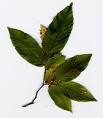Hophornbeam Tree Information
Images of Hophornbeam:






Hophornbeam grows in the following 43 states and provinces:
Alabama, Arkansas, Colorado, Connecticut, Delaware, Florida, Georgia, Illinois, Indiana, Iowa, Kansas, Kentucky, Louisiana, Maine, Manitoba, Maryland, Massachusetts, Michigan, Minnesota, Mississippi, Missouri, Nebraska, New Brunswick, New Hampshire, New Jersey, New York, North Carolina, North Dakota, Nova Scotia, Ohio, Oklahoma, Ontario, Pennsylvania, Prince Edward Island, Rhode Island, South Carolina, South Dakota, Tennessee, Texas, Vermont, Virginia, West Virginia, WisconsinInformation about Hophornbeam:
The Ostrya Virginiana is commonly known as the American Hophornbeam, Eastern Hophornbeam, Hophornbeam as well as Ironwood.
The currently accepted scientific name for eastern hophornbeam is Ostrya virginiana (Mill.) K. Koch . Recognized varieties and forms are as follows : var. virginiana - (typical) eastern hophornbeam var. laisa Fern. - with twigs permanently and heavily pubescent var. virginiana forma glandulosa (Spach) Macbr. - with stalked glands on the twigsEastern hophornbeam is found from Prince Edward's Island to Nova Scotia west through Ontario and Manitoba, and south to the Black Hills of South Dakota. Its range includes all eastern states to northern Florida and eastern Texas. It also extends to the highlands of southern Mexico, and south to Guatemala, El Salvador, and Honduras .Eastern hophornbeam most commonly occurs as a subordinate species in maple(Acer spp.)-beech (Fagus spp.) and maple-basswood (Tilia spp.) communities. It is not an indicator of any particular habitat type .Some of the information provided here is attributed to:Coladonato, Milo 1992. Ostrya virginiana. In: Fire Effects Information System, [Online]. U.S. Department of Agriculture, Forest Service, Rocky Mountain Research Station, Fire Sciences Laboratory (Producer). , available at the USDA Fire Effects Information System (FEIS) website